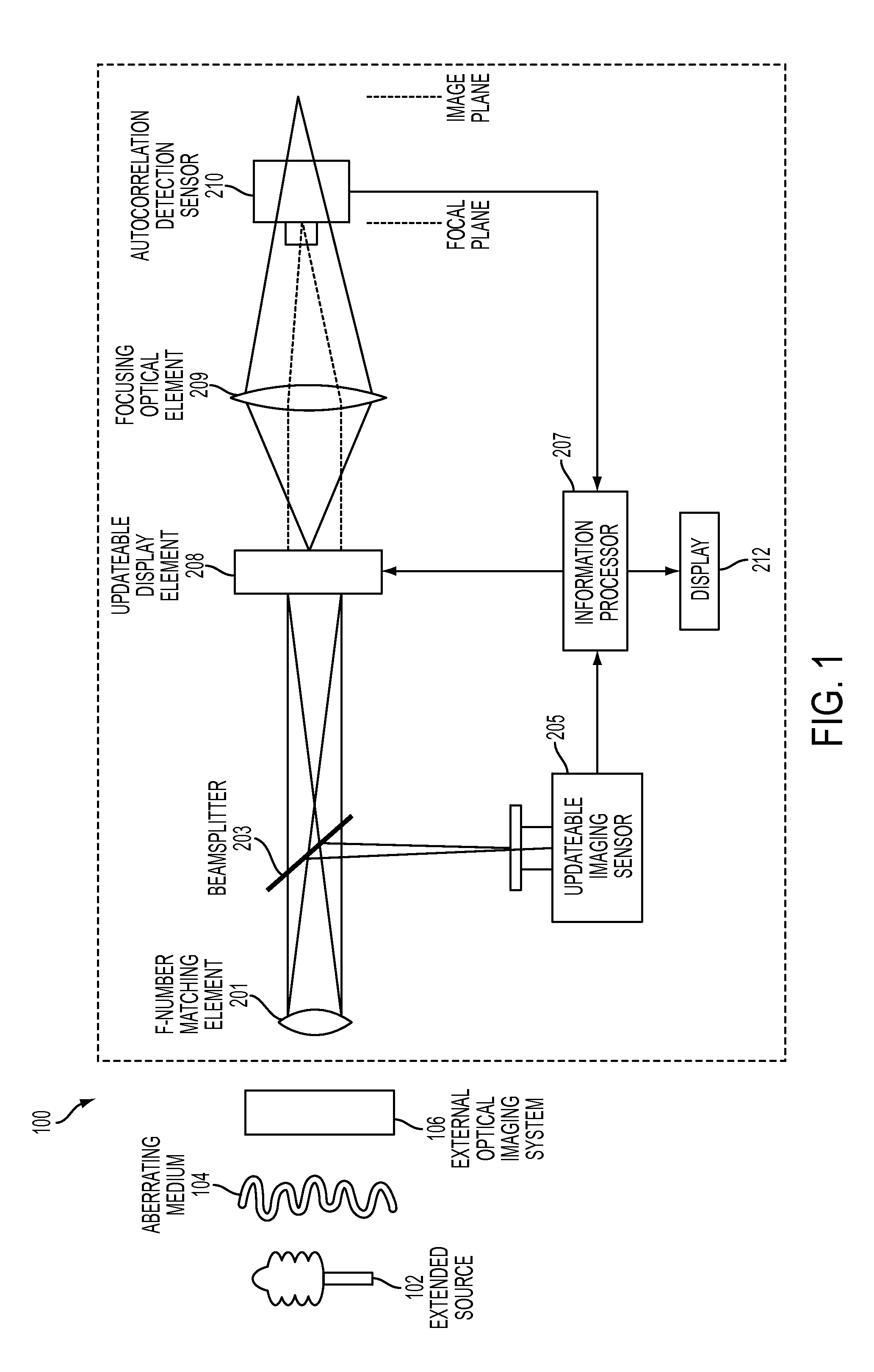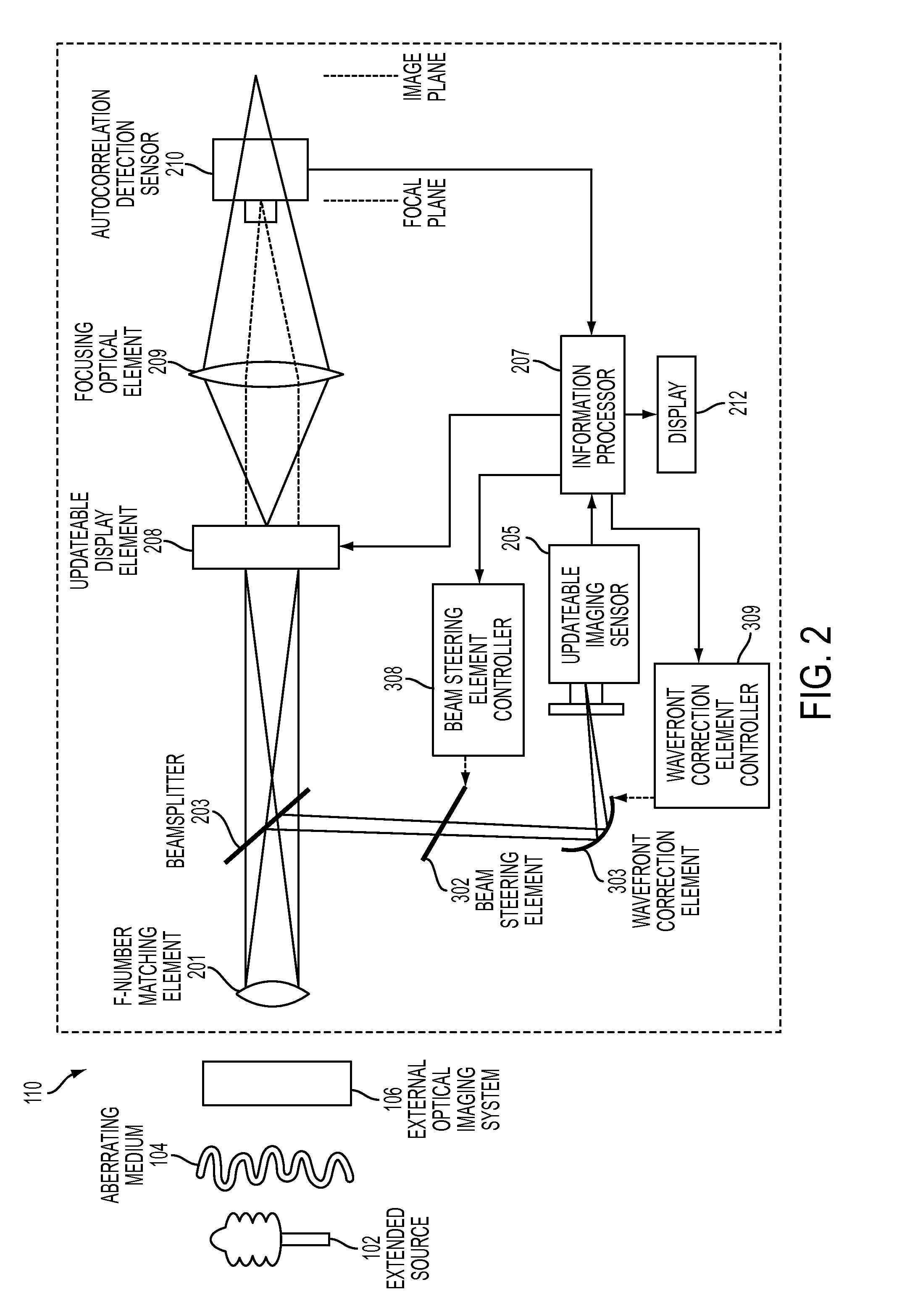Extended Source Wavefront Sensor through Optical Correlation
a wavefront sensor and optical correlation technology, applied in the field of optics, can solve problems such as not being well suited to operate with extended sources
- Summary
- Abstract
- Description
- Claims
- Application Information
AI Technical Summary
Benefits of technology
Problems solved by technology
Method used
Image
Examples
Embodiment Construction
[0019]The principle of this patent is embodied as an extended source wavefront sensing system that uses two optically correlated images of a scene and the Fourier transform capabilities of a focusing optical element. Optical energy from a scene is modulated by a previously recorded image of the scene and their autocorrelation is thus measured. As time evolves, any changes in the scene, platform position or the media that the optical energy passes through, will result in a changes in the incoming optical energy with respect to the previously recorded image and be observed in the autocorrelation. The autocorrelation is measured as a displacement on the autocorrelation detection sensor. Changes in the global tip and tilt, or higher order aberrations, of the light energy entering the system will cause a shift in the central peak of the light on the autocorrelation detection sensor. This peak shift can be detected by centroid detection or other means, and will indicate the wavefront tip / ...
PUM
 Login to View More
Login to View More Abstract
Description
Claims
Application Information
 Login to View More
Login to View More - R&D
- Intellectual Property
- Life Sciences
- Materials
- Tech Scout
- Unparalleled Data Quality
- Higher Quality Content
- 60% Fewer Hallucinations
Browse by: Latest US Patents, China's latest patents, Technical Efficacy Thesaurus, Application Domain, Technology Topic, Popular Technical Reports.
© 2025 PatSnap. All rights reserved.Legal|Privacy policy|Modern Slavery Act Transparency Statement|Sitemap|About US| Contact US: help@patsnap.com



